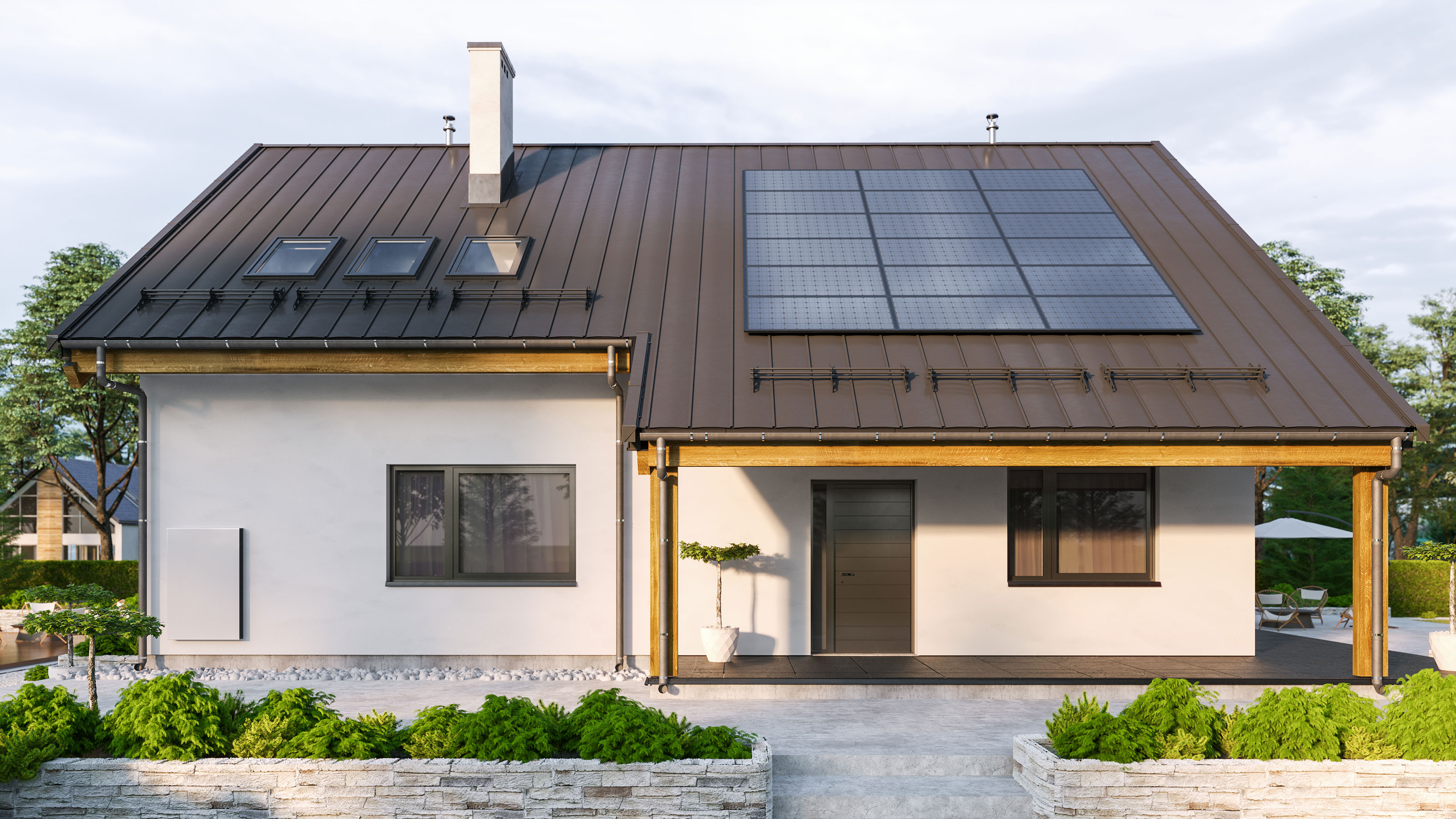

Even in the UK, you can make use of energy from the sun to generate electricity for your home, or to heat water, via different types of solar panels.
But you’re probably wondering what solar panel installation involves, and if your home is suitable for them. And solar panels cost is likely an important question you have, too. All in all, if you want to save on energy bills and reduce carbon emissions, solar panels for the home are a technology you’ll want to consider investing in.
In this guide we’ll explain the different types of solar panels for the home, how much they cost and how much you might save on your bills, and whether you’ll need permission to add them to your home.
Solar panels for the home
There are two types of solar panels for the home available together with a hybrid version.
Solar photovoltaic (PV) panels generate electricity. Solar thermal panels heat water. The hybrid version of these are called photovoltaic thermal panels (PVT) which are PV panel and solar thermal panel in one.
- Find out more on the different types of heating.
Solar PV panels
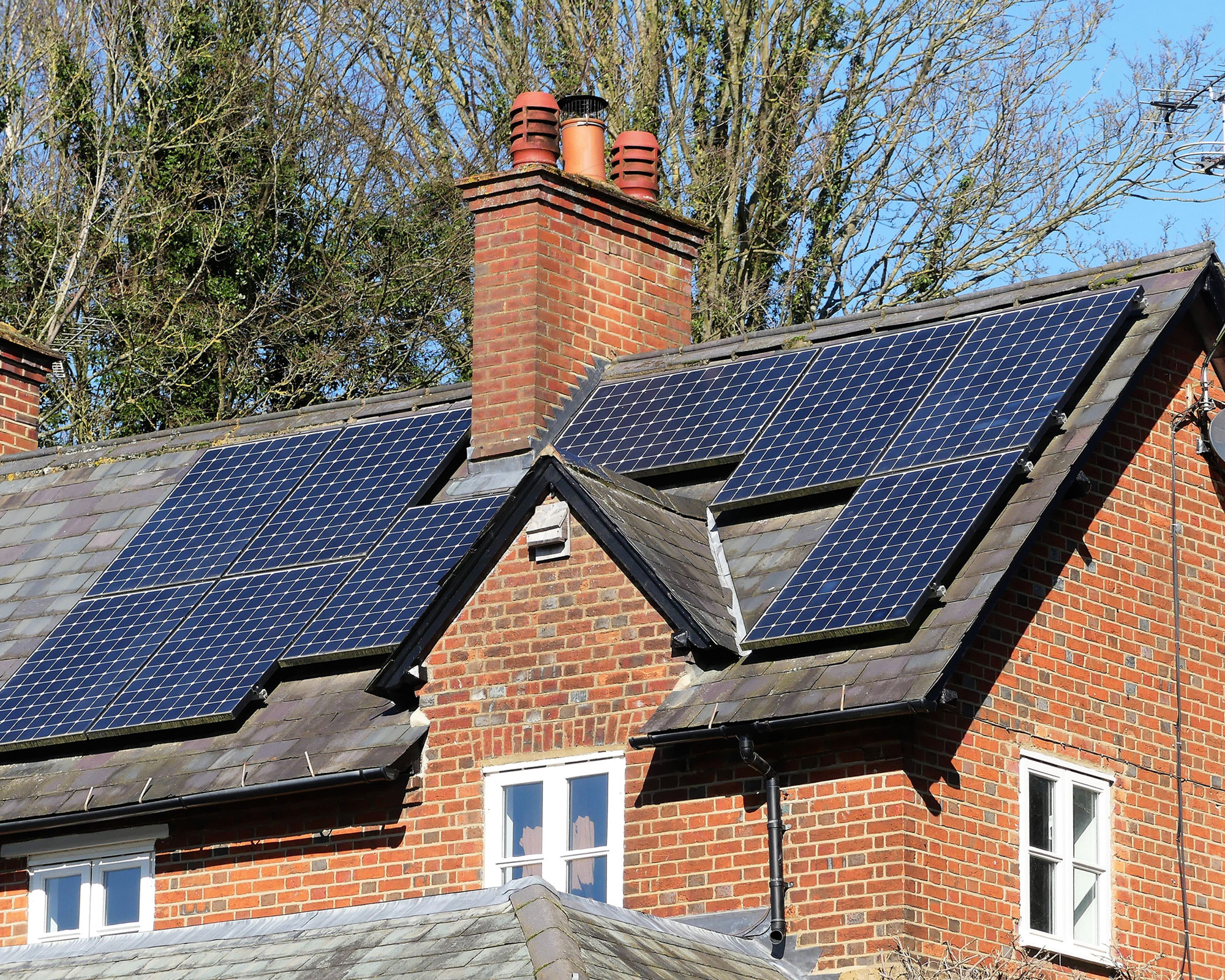
Solar PV panels capture the sun’s energy to generate electricity which can be used around the house for powering appliances and lighting. Solar PV is currently the most common type of solar panel in the UK, with nearly half a million homes having had them installed. The panels are most commonly fitted on to pitched roofs.
A panel should last 25 years, but parts may need replacing during this time. Your installer should advise you on maintenance and how to check your system is functioning properly; however, the panels generally need little attention.
Solar thermal panels
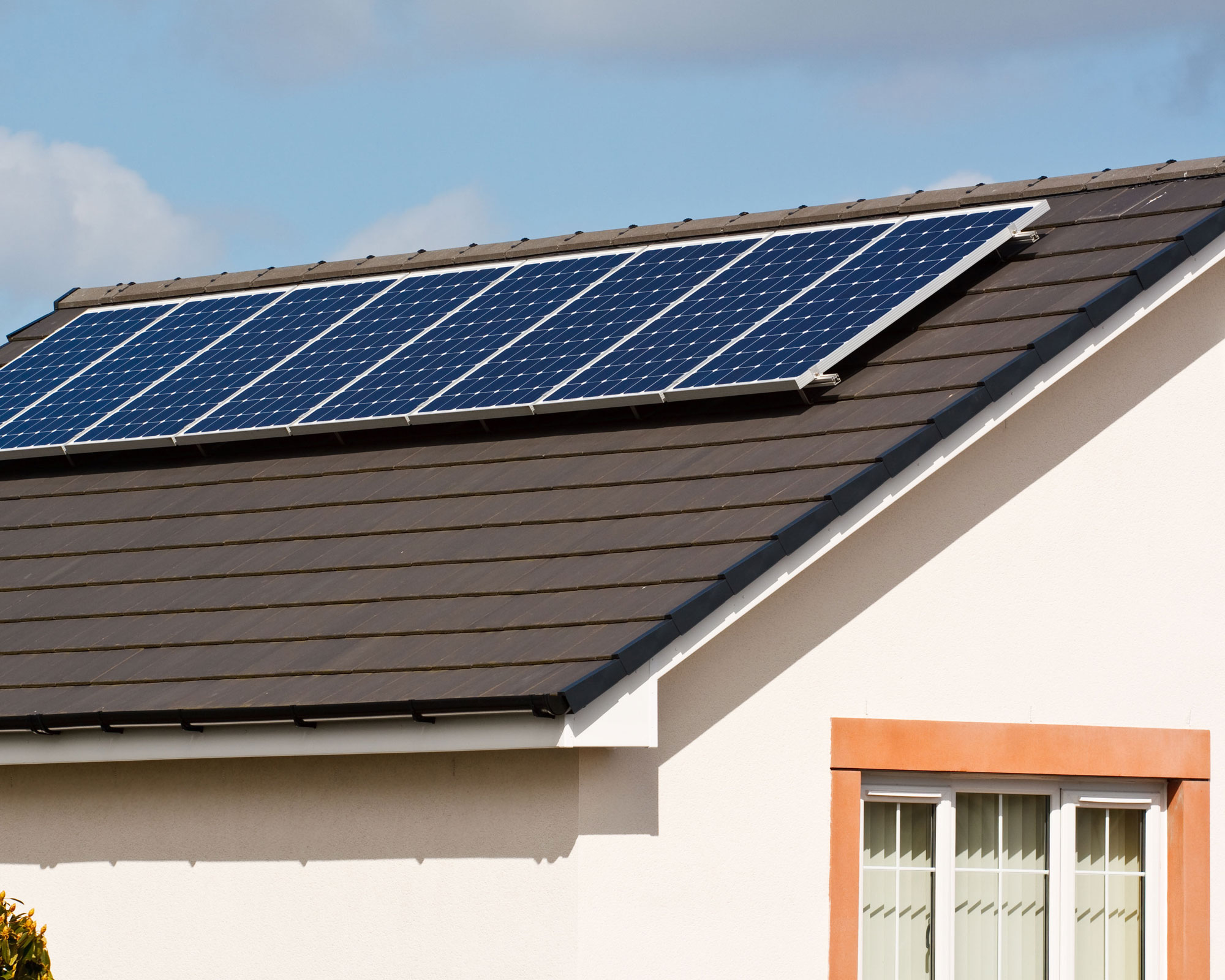
Solar thermal panels use the sun’s energy to provide hot water for your home. The panels use sunlight to produce heat, which is captured in a fluid and taken to the hot water cylinder.
There are two different types of solar thermal panels (also known as collectors) on offer, flat plate and evacuated tube. The latter have the edge on flat plate solar collectors when it comes to efficiency although you might prefer the look of the former.
Be aware that where possible solar thermal panels should be located on a south-facing roof.
Maintenance costs are low and most solar water heating systems come with a five to 10 year warranty.
- Discover our dedicated energy comparison page.
How many solar panels do you need to power a whole house?
Out of the two types of solar panels for the home, when we’re talking ‘power’, we’re talking solar PV panels. So, how many of these will you need?
‘The number of solar panels is dependent on your energy consumption, sun hours, and roof size,’ says Steven Gladman of Trinasolar. ‘In the UK, 12 solar panels are required for a 3kW solar installation, and 24 panels for a 6kW installation. The bigger the size of the panel, the more energy is generated per square metre.
‘The average energy consumption – or planned usage – is the most important guideline in determining the number of solar panels that you need,’ he continues. ‘Here, the consideration is the total kilowatt hours (kWh) you currently use, or intend to use, in your home.
‘The amount of energy solar panels can generate is dependent on sun hours, and is therefore affected by your location. There are varying amounts of sun hours in the UK, which will affect the number of solar panels you will need.
‘Your roof size is a key factor because it determines the number of panels that can fit on your roof, how much energy will be generated, and the cost. It is also important to consider your roof suitability: whether it can support the weight of the solar panels and how the panels will be angled.
‘An average UK home consumes between 3kWh and 6kWh of energy daily, and some UK homeowners use solar energy to power only parts of their energy consumption, which would then reduce the number of solar panels installed.’
How much does it cost to put solar panels on your house?
When it comes to solar panel installation, every one is different. For solar PV panels, Steven Gladman of Trinasolar provides the following guide:
3 kW £5,000 to £6,000
4 kW £6,000 to £8,000
5 kW £7,000 to £9,000
6 kW £8,000 to £10,000
12 kW £11,000 to £13,000
‘Remember, this will include not just the solar panels, but the mounting system for the panels, the inverter (which converts DC (direct current) into conventional AC (alternating current) electricity that can run numerous electrical appliances), labour, scaffolding, wiring and testing all consumables required,’ he explains.
As for solar panels cost for solar thermal? A typical cost for the installation of a solar water heating system is around £3,000 to £5,000, according to the Energy Saving Trust (EST). The size of the system and whether you opt for flat plate or evacuated tube collectors will influence the cost.
What savings can you make with solar panels?
The savings you can make with solar PV panels will depend on where you live and whether you use the smart export guarantee (SEG).
In Great Britain taking advantage of the smart export guarantee brings higher savings, paying for renewable energy you export to the grid. In Northern Ireland, you can get paid for exporting a surplus by one of the organisations that offers this service.
In London and south-east England and with the SEG you might save from £225 to over £300, depending on how much time you spend at home each day, according to the EST. Meanwhile, in Stirling, Scotland, savings could be from £185 to £290 with the SEG and again depending on how much time you are at home each day, the EST’s figures show.
A solar water heating system might save you from around £60 per year if you currently use gas to £115 per year if you currently use LPG to heat water, according to the EST. Actual savings will of course vary depending on the system and your usage.
Bear in mind that solar water systems normally provide around half of your hot water requirement – that is nearly all of it in summer, but less in winter – says the EST. You’ll still need your boiler or an immersion heater to fill the gap.
Which type of solar panel is best for home use?
As you can see from our solar panels cost information, a solar PV system is likely to cost more to install but brings bigger potential savings.
However, there are other advantages and disadvantages to both types of panel that might play a part in your decision. Solar thermal is more efficient than solar PV – around 80 per cent compared to around 20 per cent – and you’ll need fewer panels on your roof.
On the downside, solar thermal panels have a shorter lifespan than solar PV, and, as we’ve already mentioned, they won’t provide all the hot water you need all year round. Bear in mind also that you’ll need to find room for a hot water cylinder if you use a solar thermal system, and when it comes to the types of boiler on offer, it’s a system boiler you’ll need.
Is it legal to install solar panels on your house?
It is legal to install solar panels on a house. ‘In April 2008, solar panels were designated permitted development, meaning that planning permission was no longer necessary,’ explains Steven Gladman. ‘The exceptions to this are: if your house is a listed building; and if your house is situated within a conservation area.’
‘It is possible to receive planning permission in these cases, but this is at the discretion of your local planning authority,’ he continues. ‘Aside from this, solar panels are subject to normal building regulations, which involves checking that the roof can support the extra load – your MCS-certified installer (Microgeneration Certification Scheme) will check this for you.’
Be aware that there are solar panel installation requirements involving factors such as panel height and projection and these can be found on the government’s planning portal.
Selling energy back: how it works
If you are considering fitting solar panels for the home in order to generate electricity, be mindful that the feed-in tariff (FIT) scheme which paid for the export of surplus energy to the grid closed to new applications in March 2019. There is now the smart export guarantee (SEG), which was introduced to provide financial support to small-scale generators for the electricity they export to the grid. It applies in England, Scotland and Wales.
‘Under the scheme, all licensed energy companies with 150,000 or more customers must provide at least one SEG tariff,’ explains the EST. ‘Smaller suppliers can offer a tariff if they want to on a voluntary basis. All suppliers can also choose to offer other means of making payments for exported electricity, separate to the SEG arrangements.’ Ofgem provides an SEG supplier list.
Note that there aren’t any set or minimum tariffs, and they might be fixed or variable.
As solar electricity is a renewable energy, you’ll be reducing your home’s carbon footprint, too. The Energy Saving Trust estimates that a typical domestic solar PV system could save over a tonne of carbon dioxide per year – and more than 30 tonnes over its lifetime.
How to boost the benefits of solar panels
There are things you can do to ensure a reasonable payback on your solar installation, says Brian Horne, energy expert at the Energy Saving Trust:
- Get a good deal: make sure you request quotes from several installers.
- Pick a good location. Ideally, you will want a system that is angled between 30 and 50 degrees and facing between south-east and south-west. Avoid areas of shade.
- Use more of the electricity yourself: put on the dishwasher, washing machine and tumble dryer during the day, but all at different times. You could invest in a solar diverter, which heats up a hot water cylinder when the sun shines, or a battery system to store the electricity for use in the evening. However, more research is needed on the cost benefits of these.
Is it possible to go ‘solar only’?
For people who live in isolated properties with no realistic option for a mains connection, solar PV is one of the options for providing some level of electricity supply. You will need a substantial battery store, and most people would also opt for a diesel generator to top the system up when necessary. An off-grid electricity system will never provide the consistency of supply that you get with the mains, but for some homes it is the only realistic option.
If you already have mains there is no point in even considering disconnecting. It is theoretically possible to do so, but you will spend a fortune on equipment that takes up a lot of space in exchange for a variable supply that won’t be able to run all of your existing appliances. And you won’t be helping the planet much either.
If you have the mains, use it, and if you fit enough solar panels you may generate more than you use over the year. If you want to call that ‘solar only’ then that’s up to you.

Solar panels for the home: the future
Solar panel installations declined steeply following the end of the FIT, but on a more positive note, the EST notes that the costs of panels have fallen dramatically. ‘All the signs suggest that further reductions in prices, both for solar and battery storage technology, are almost inevitable,’ it says.
Do you have to pay to be connected to the grid?
Not directly, but you do have to pay to use a registered installer who will ensure that your grid connection is safe and legal, and will notify the district network operator once your system is connected.
Will it cost to maintain solar panels once installed?
Solar PV panels themselves are unlikely to need any maintenance during their expected 25 year life. If a panel fails it should be covered by the manufacturer’s warranty – check the details of this and all other guarantees before agreeing to an installation.
One piece of equipment that probably will need replacing is the inverter – this is the box of electronics that converts the solar output into 240V electricity that can be connected to your supply. The inverter is unlikely to last as long as the panels, and will not have the same length of warranty, so you should expect to have to replace it at some point during the life of the system. Expect to pay from around £600.
Images: iStock (PV and Thermal), Newform Energy (PVT), Solar Slate (Tiles and Slates)
Get expert advice on adding solar panels and bespoke quotes:
Join our newsletter
Get small space home decor ideas, celeb inspiration, DIY tips and more, straight to your inbox!
Anna is a professional writer with many years of experience. She has a passion for contemporary home decor and gardening. She covers a range of topics, from practical advice to interior and garden design.
-
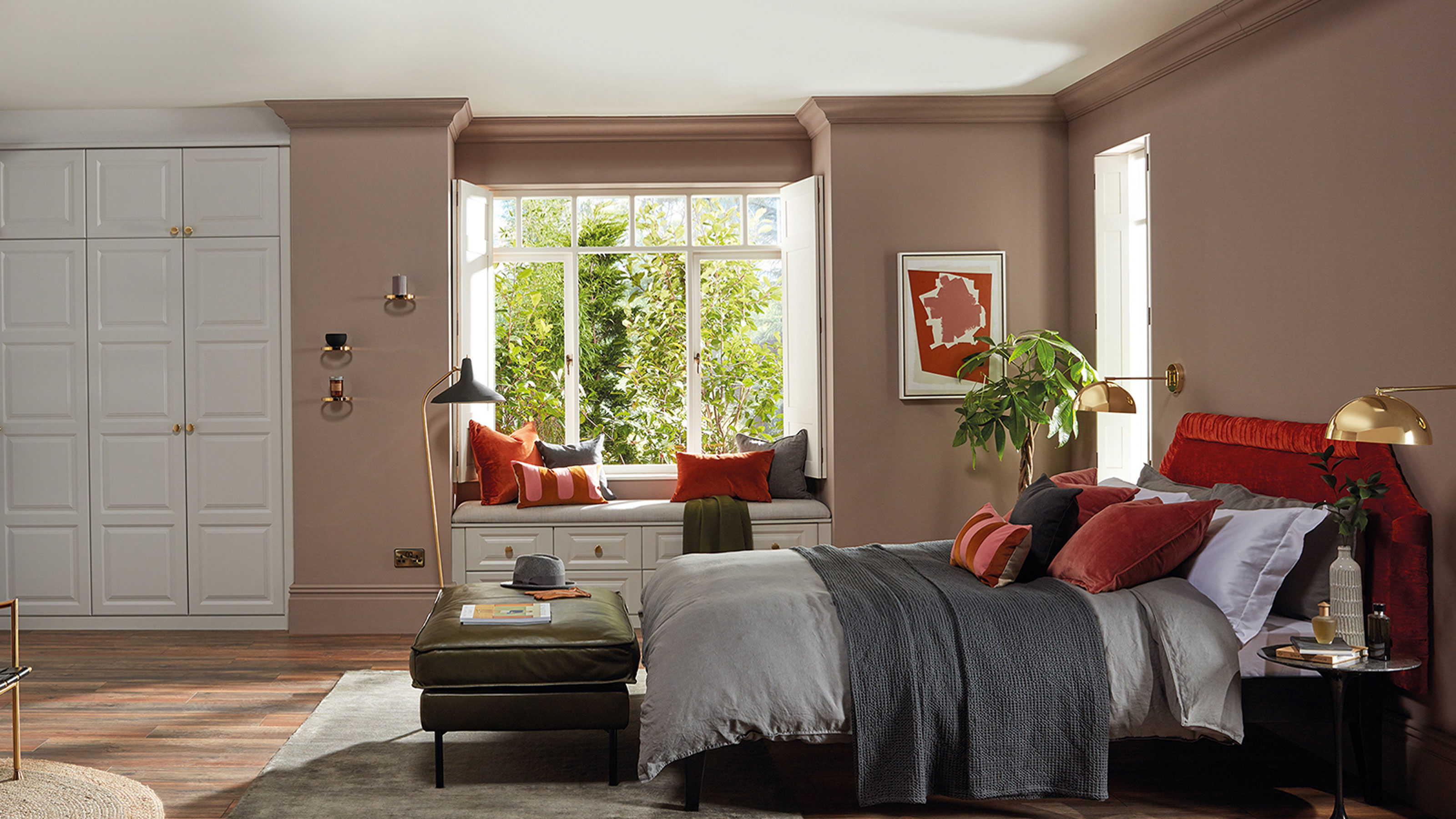 Anthony Carrino reveals $8 product all renters need to help keep their home warm
Anthony Carrino reveals $8 product all renters need to help keep their home warmThe designer known for his HGTV show 'Kitchen Cousins' shares his window insulation tip to keep your home warm
By Millie Hurst
-
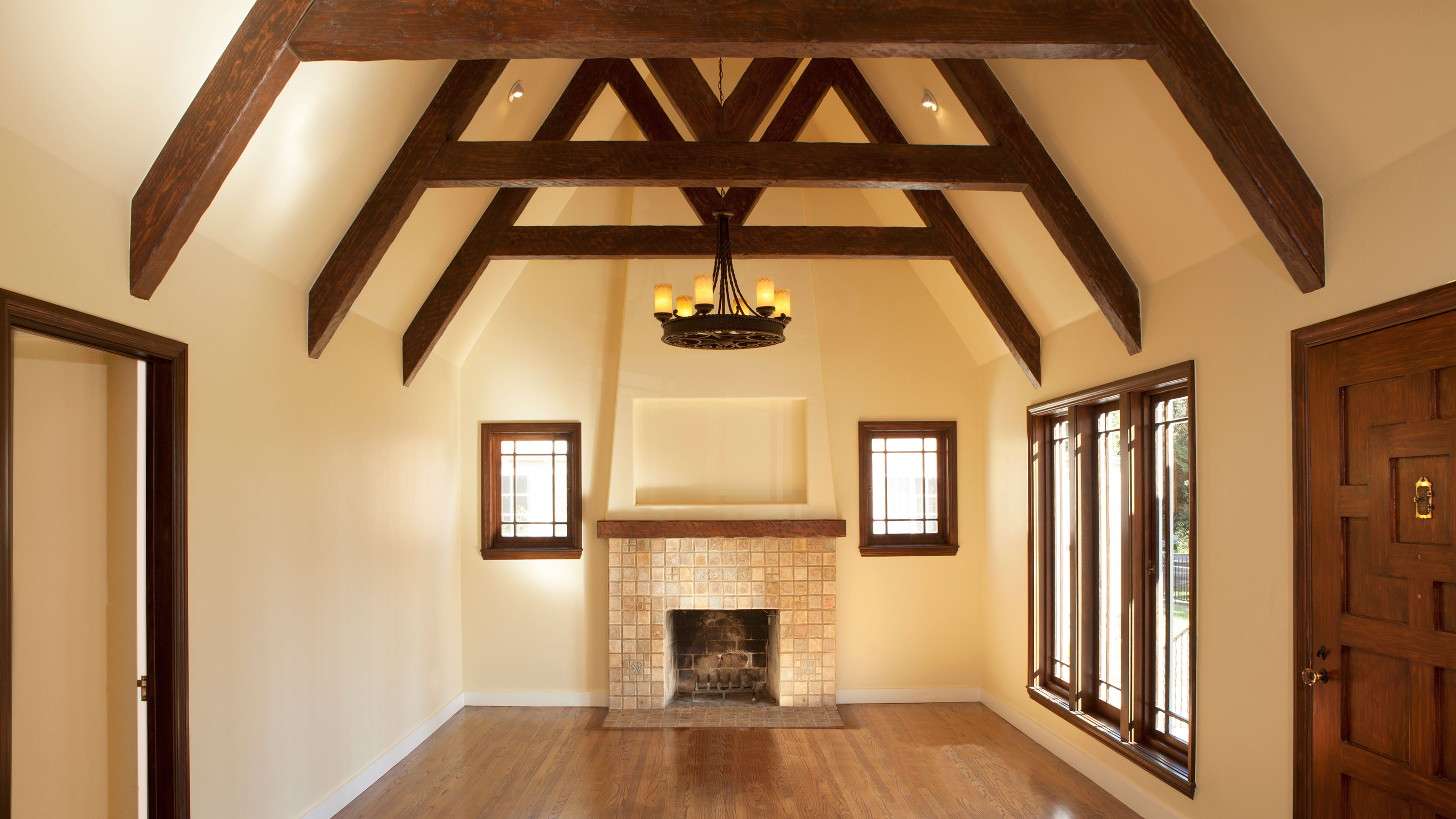 A total guide to vaulted ceilings – pros, cons, costs and more
A total guide to vaulted ceilings – pros, cons, costs and moreWeigh up the pros, cons and costs of vaulted ceilings to decide whether they are the right fit for your home.
By Sarah Warwick
-
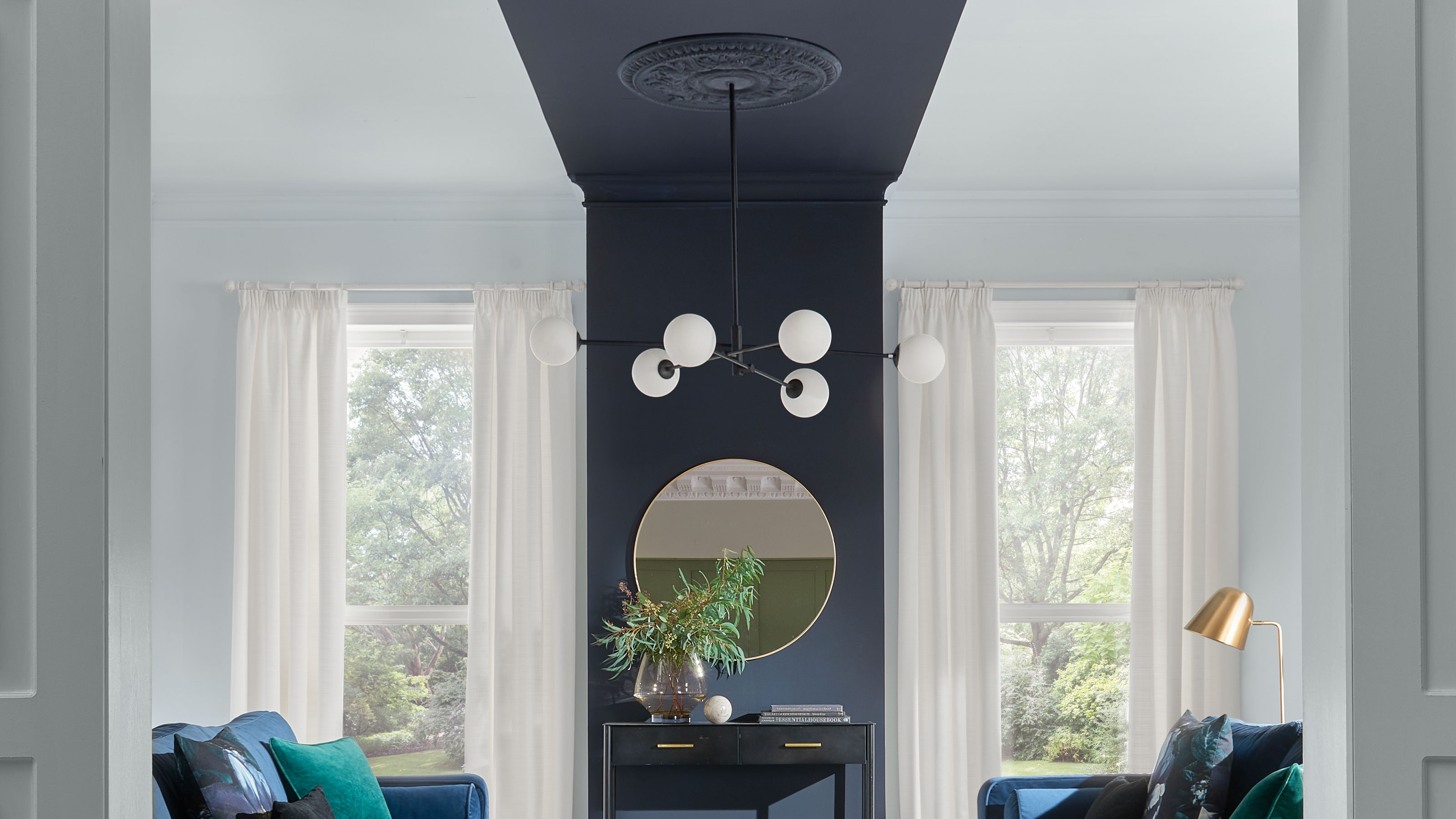 17 ceiling ideas to add wow factor from above
17 ceiling ideas to add wow factor from aboveTransform your fifth wall with ceiling ideas that are sure to add character to every room. From beams and paint to wallpaper and more unique ways to cover ugly or dated ceilings, there's so much in the way of inspiration.
By Holly Phillips
-
 5 ways to stop drafty doors fast — seal air leaks with help from the experts
5 ways to stop drafty doors fast — seal air leaks with help from the expertsLearn how to stop drafty doors if you're feeling a chill. Sealing air leaks is easily done DIY with quick fixes from home experts.
By Anna K. Cottrell
-
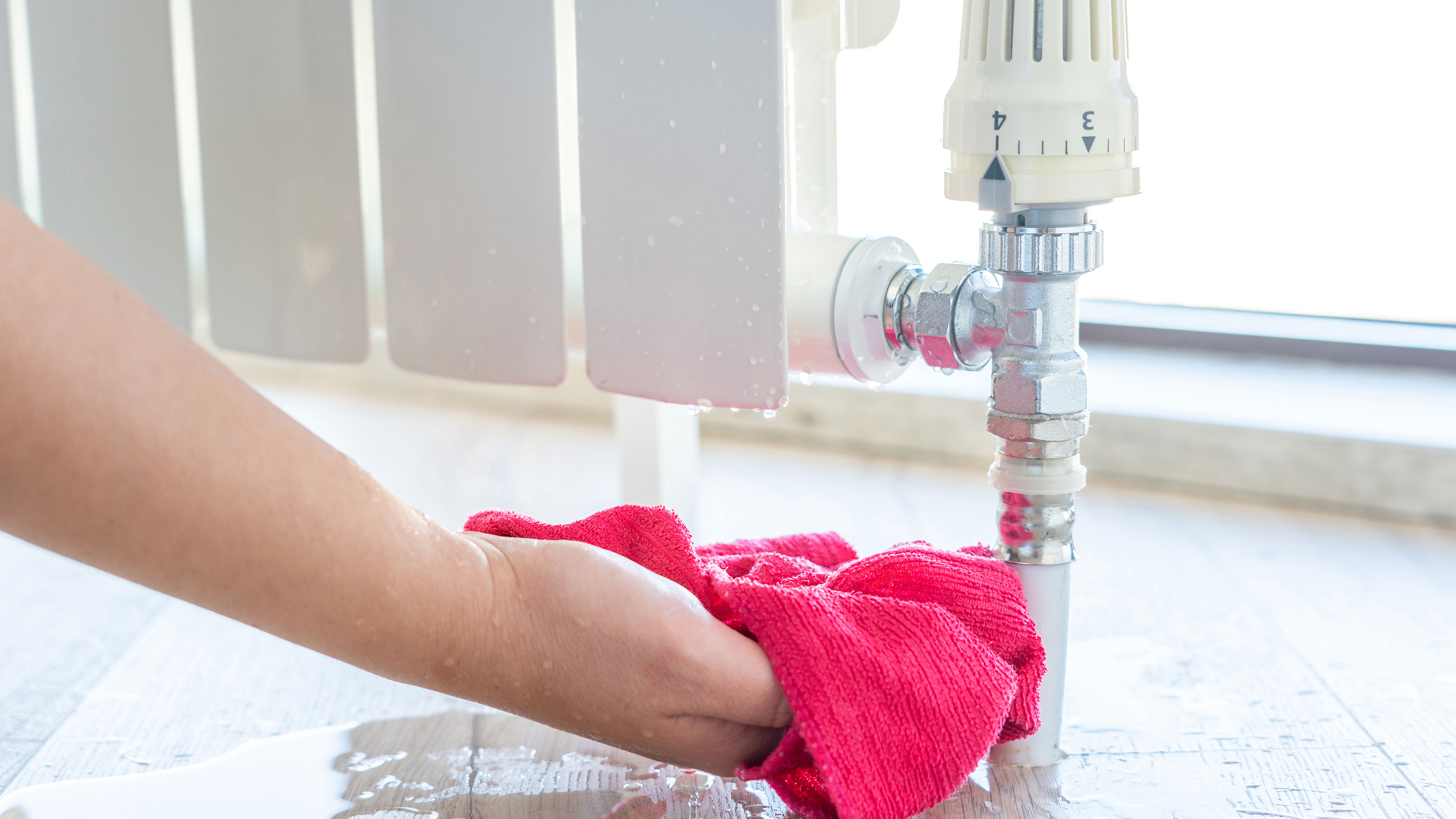 Leaking radiators: why it happens and how to fix it
Leaking radiators: why it happens and how to fix itIf you've got a leaking radiator, you should try and resolve the issue quickly. This is why it's happening and how to fix it.
By Sarah Warwick
-
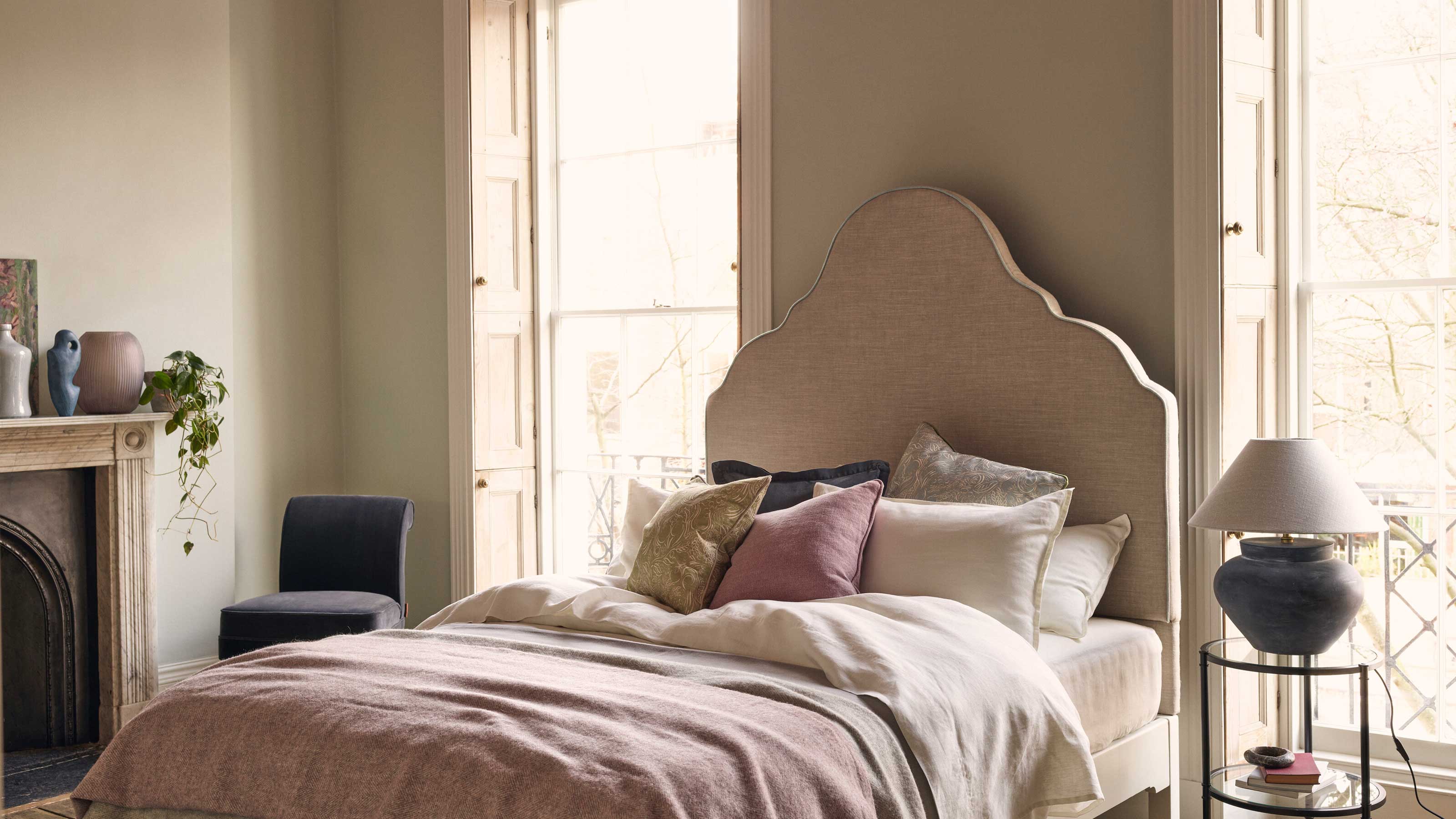 How to keep scrolling for DIY inspo – without losing sleep
How to keep scrolling for DIY inspo – without losing sleepBecause there's a time and a place for TikTok. And just before bed isn't the one
By Millie Hurst
-
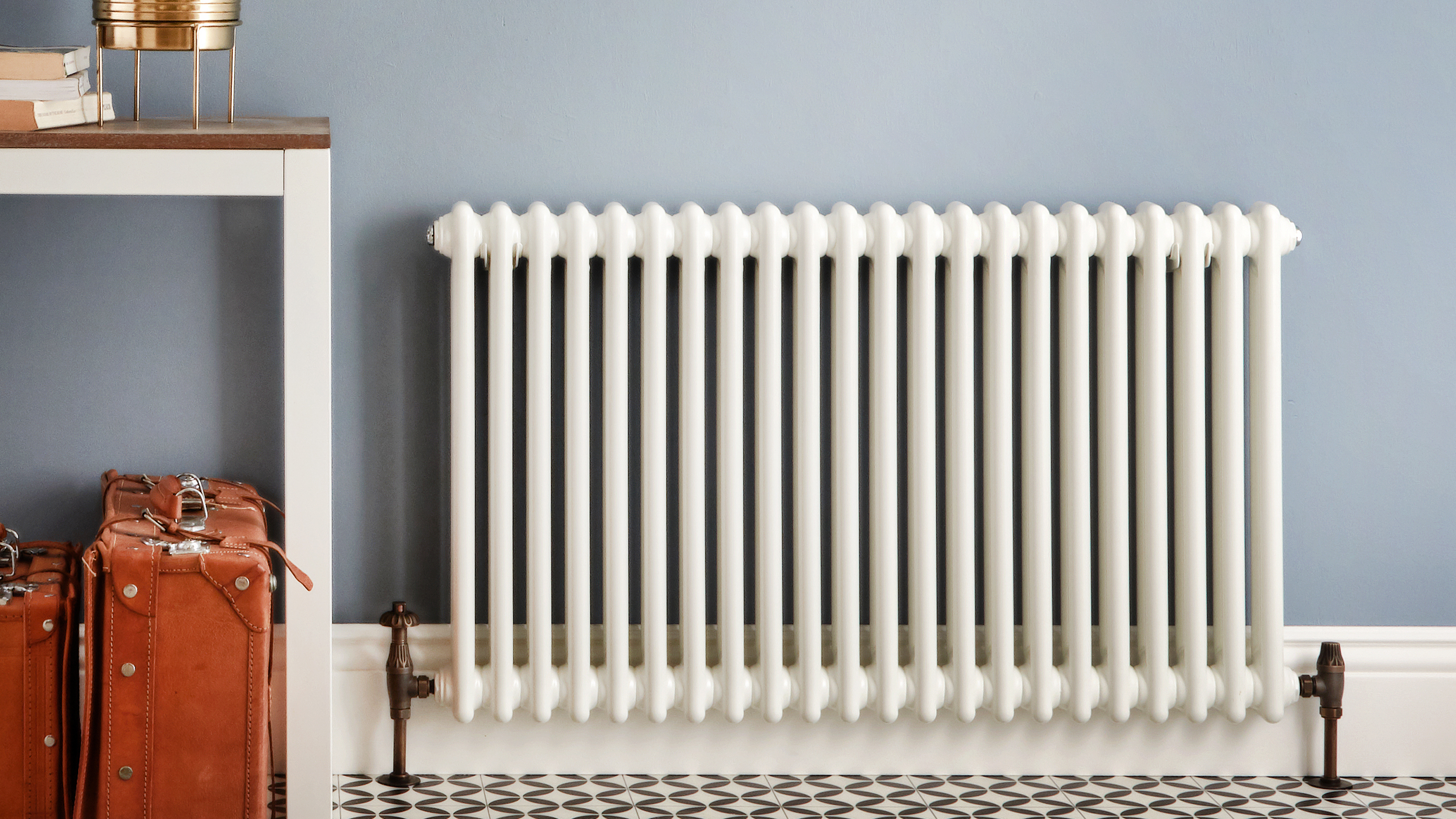 How much does it cost to replace a radiator?
How much does it cost to replace a radiator?Everything a homeowner needs to know about what it costs to replace a radiator and when to do it
By Carol J. Alexander
-
 How to balance radiators – a simple step-by-step guide
How to balance radiators – a simple step-by-step guideSome of your radiators slow to heat up? Learn how to balance radiators and solve the problem
By Sarah Warwick